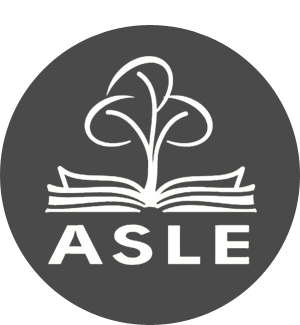Judges have announced the finalists for the 2017 ASLE Book Awards. The ASLE book awards in the areas of ecocriticism and environmental creative writing recognize excellence in the field.
Winners will be announced in early June, and the official presentation will be at the Twelfth ASLE Biennial Conference, to be held at Wayne State University in Detroit, MI, from June 20-24, 2017. Eligible submissions were books published by ASLE and affiliate members since the last awards cycle (2015-2016). Congratulations to our short-listed authors:
ASLE Creative Writing Award Finalists
The judges were Emily McGiffin, the winner of the ASLE Creative Writing Award in 2015, who lives in Vancouver, BC; Rich King, a finalist for the 2015 Creative Writing Award, a research associate with The Maritime Studies Program of Williams College and Mystic Seaport; and Tom Hallock, who teaches in the Visual & Verbal Arts Department at the University of South Florida-St. Petersburg.
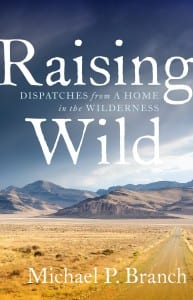 Branch, Michael P. Raising Wild: Dispatches from a Home in the Wilderness. Boulder: Roost, 2016.
Branch, Michael P. Raising Wild: Dispatches from a Home in the Wilderness. Boulder: Roost, 2016.
“A beautifully-written collection of essays that splices memoir with natural history as it carries us deep into the unsung terrain of domesticity in the wilderness. Michael Branch is keenly observant and unfailingly witty as he schools us in the natural wonders of his home.”
Hanson, Chad. This Human Shape. Northfield, MN: Red Dragonfly, 2016.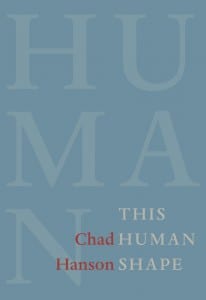
“Close observation opens into magic in this humble and finely-crafted collection. This Human Shape joins the finest environmental literature in offering up a rich set of characters closely entwined with the creatures, plants and objects of the landscapes they dwell in.”
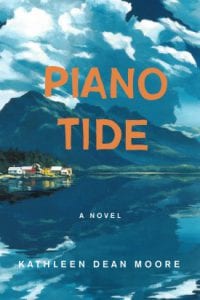 Moore, Kathleen Dean. Piano Tide: A Novel. Berkeley: Counterpoint, 2016.
Moore, Kathleen Dean. Piano Tide: A Novel. Berkeley: Counterpoint, 2016.
“A beautiful, unique, and suspenseful novel. Kathleen Dean Moore has somehow channeled the ecology and humanity of E. Annie Proulx’s Shipping News and John Steinbeck’s Cannery Row into Good River Harbor, an imaginary town in Southeast Alaska. Even while focusing on the details and spinning a page-turner, Moore encompasses most of the major issues of the twenty-first century in the Pacific Northwest: salmon, water, tourism, jobs, global warming, wilderness, and the lives and legacy of First Peoples. Howard, her straight man caught in the middle, begins to think the same as Nora, the eco-activist: Imagine how you can live in a place without wrecking it.”
Raymond, Midge. My Last Continent: A Novel. New York: Scribner, 2016.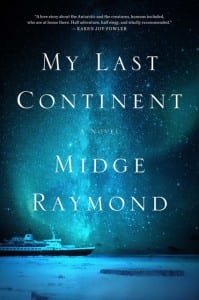
“My Last Continent is a love story. Raymond teaches us how and why to love Antarctica. She lures us into loving her nuanced protagonist, a field ornithologist named Deb Gardner. And Raymond shows us how and why to love all the other scientists and romantics who spend part of each year at the bottom of the world:” those who have run out of places to go, and those who have run out of places to hide.” Can a drama of romance and shipwreck and penguins also have something to say about ecotourism and climate change? Yes. My Last Continent is what happens when a nature writer crafts an event like the Titanic.”
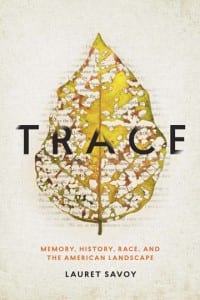 Savoy, Lauret Edith. Trace: Memory, History, Race, and the American Landscape. Berkeley: Counterpoint, 2015.
Savoy, Lauret Edith. Trace: Memory, History, Race, and the American Landscape. Berkeley: Counterpoint, 2015.
“Well researched, timely, gracefully written; particularly intriguing on the connections between landscape, memory and race.”
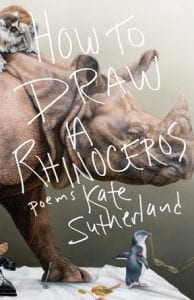 Sutherland, Kate. How to Draw a Rhinoceros: Poems by Kate Sutherland. N. p.: Book Thug, 2016.
Sutherland, Kate. How to Draw a Rhinoceros: Poems by Kate Sutherland. N. p.: Book Thug, 2016.
“Surprisingly insightful in its contemporary adaptations of earlier natural history traditions.”
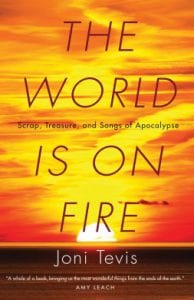 Tevis, Joni. The World Is on Fire: Scrap, Treasure, and Songs of Apocalypse. Minneapolis, MN: Milkweed, 2015.
Tevis, Joni. The World Is on Fire: Scrap, Treasure, and Songs of Apocalypse. Minneapolis, MN: Milkweed, 2015.
“Some of the most explosive prose I’ve read in some time. Unsettling.”
ASLE Ecocriticism Book Award Finalists
The judges were Nicole Seymour, winner of the the winner of the ASLE Ecocritical Book Award in 2015, Tom Lynch, founding coordinator of the ASLE Book Awards and editor of the journal Western American Literature, and Molly Westling, Professor Emerita at the University of Oregon and author of The Green Breast of the New World: Landscape, Gender and American Fiction.
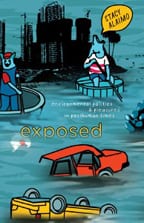 Stacy Alaimo, Exposed: Environmental Politics and Pleasures (University of Minnesota Press, 2016)
Stacy Alaimo, Exposed: Environmental Politics and Pleasures (University of Minnesota Press, 2016)
“This book is a rich, very original extension of Alaimo’s influential concept of “transcorporeality” from her previous scholarship. Exposed explores the radical ways such a perspective erases illusions of human separateness from the rest of the living world, thus leaving Cartesian objectivism far behind. With ingenuity and nuance, Alaimo here applies queer theory, marine biology, feminist posthumanism, and exciting aesthetic analysis to insist on human embeddedness in the deep material reality of earth and especially sea on the one planet where we belong and whose climates are rapidly, dangerously changing.”
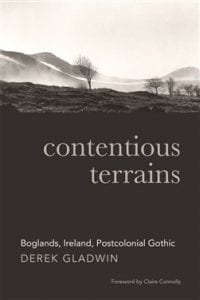 Derek Gladwin, Contentious Terrains: Boglands, Ireland, Postcolonial Gothic (Cork University Press, 2016)
Derek Gladwin, Contentious Terrains: Boglands, Ireland, Postcolonial Gothic (Cork University Press, 2016)
“An original, richly theorized examination of the deep landscape histories embodied in Northern European boglands, especially in Ireland, and literary treatments of their meanings by writers from Bram Stoker, Frank O’Connor, Sean O’Faolain and Nobel Laureate Seamus Heaney to more recent poets and playwrights and remarkable geocultural nonfiction writer Tim Robinson. Gladwin as a Canadian ecocritic brings fresh postcolonial approaches to consider these shifting spaces that are part water, part earth and that have moved and changed in radical ways over geological time and more recently through empires from Celtic and Roman to Viking and Anglo powers.”
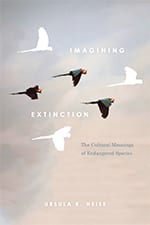 Ursula Heise, Imagining Extinction: The Cultural Meanings of Endangered Species (University of Chicago Press, 2016).
Ursula Heise, Imagining Extinction: The Cultural Meanings of Endangered Species (University of Chicago Press, 2016).
“Heise brings her formidable analytical skills and erudition to an analysis of how we think about and respond to one of the main aspects of the Anthropocene, extinction. Makes a strong case for the importance of the humanities in how we understand what is often considered to be a purely scientific problem. Well written, this will be a key text in the field for years to come.”
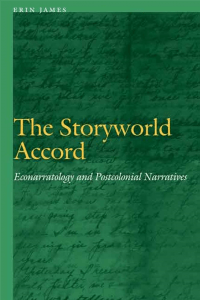 Erin James, The Storyworld Accord: Econarratology and Postcolonial Narratives (University of Nebraska Press, 2016).
Erin James, The Storyworld Accord: Econarratology and Postcolonial Narratives (University of Nebraska Press, 2016).
“James adeptly combines three fields often seen as distinct: ecocriticism, narrative studies, and postcolonial studies. Of special note is how the book uses narrative theory, supplemented by cognitive neurobiology, to explain how readers come to inhabit the world of stories, helping us to move beyond the poorly theorized “mimesis” conundrum that has bedeviled ecocriticism. Surprising and innovative insights on every page.”
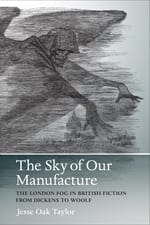 Jesse Oak Taylor, The Sky of Our Manufacture: The London Fog in British Fiction from Dickens to Woolf. (University of Virginia Press, 2016).
Jesse Oak Taylor, The Sky of Our Manufacture: The London Fog in British Fiction from Dickens to Woolf. (University of Virginia Press, 2016).
“This book fills a significant gap in terms of ecocritical work on both Victorian studies and modernism. Indeed, Taylor makes a persuasive case for literature of that period as Anthropocene literature – and, in so doing, offers a stronger account of the notion of Anthropocene literature than I’ve seen elsewhere. This book seems as important to ecocriticism/environmental humanities as it does to studies in the novel, modernism, Dickens studies, etc. – which I think is quite a feat. It’s also elegantly written and displays highly original thinking.”
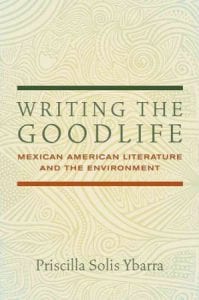 Priscilla Solis Ybarra, Writing the Goodlife: Mexican American Literature and the Environment. (University of Arizona Press, 2016).
Priscilla Solis Ybarra, Writing the Goodlife: Mexican American Literature and the Environment. (University of Arizona Press, 2016).
“This book also fills a significant gap — in this case, when it comes to coverage of Latinx/Chicanx literature and culture. I believe it’s the first book-length ecocritical study of Mexican-American literature. While groundbreaking in these ways, the book also provides a nice complement to extant work on African-American, queer, and other minority traditions of eco-engagement. It makes a bold, counterintuitive but ultimately crucial case against terms such as “environment” and “environmentalism,” showing how they are coded in racially exclusive ways. I also appreciate how the preface models the importance of the personal in the scholarly.”
